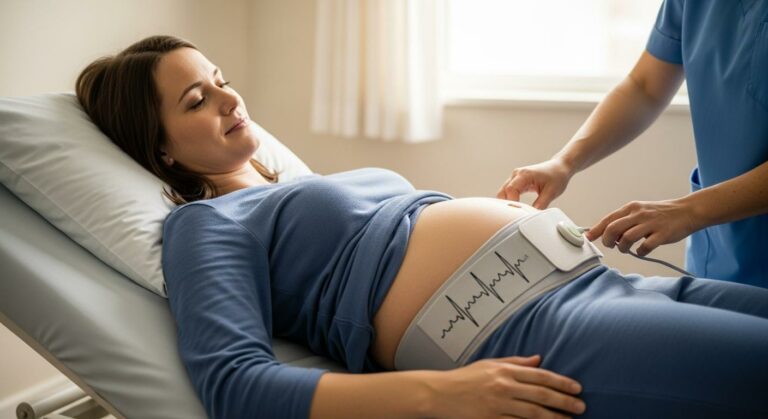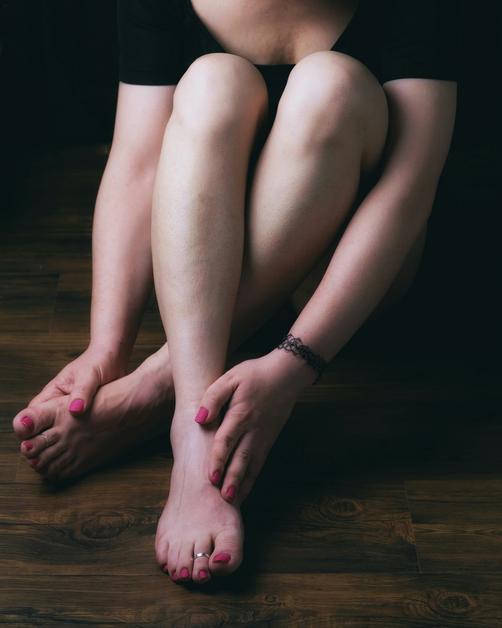Swollen feet during pregnancy—an experience both surprisingly frequent and profoundly impactful—often signals the subtle shifts happening throughout the body during this pivotal time. The sight of ankles slowly vanishing, or shoes feeling snug by late afternoon, can naturally spark questions and sometimes even anxiety. Is this a sign of something serious? What actually causes such visible fluid buildup, and more importantly, how can comfort be preserved when walking suddenly feels like wading through water? For parents keen on understanding every signal their body gives during pregnancy, unraveling the science behind swollen feet, finding genuine relief, and knowing when to seek support all emerge as recurring concerns. From hormonal cascades to the mechanics of blood flow, and from the smallest lifestyle tweaks to urgent medical warning signs, each aspect demands careful attention—balancing reassurance with the watchfulness required to ensure both parent and baby’s safety.
The Physiology Behind Swollen Feet During Pregnancy
Feet that swell during pregnancy do so for reasons intricately linked to the body’s complex adaptive strategies. As pregnancy progresses—most commonly from the second trimester onwards—fluid accumulates in tissues, especially in the lower limbs, driven by a fascinating interplay of biological forces. The medical term uses a precise label: edema. Yet for parents, it often manifests simply as shoes that no longer slip on smoothly or ankles that vanish by dusk.
Several mechanisms synchronize to cause this effect:
- Hormonal shifts: Progesterone and estrogen, the two central actors in pregnancy’s hormonal theatre, relax blood vessels, making them more permeable. The result? Fluid escapes from the circulation and settles into surrounding tissues.
- The uterus expands dramatically, compressing the pelvic veins. This increases pressure in the lower limb veins, impeding the upward flow of blood and encouraging fluid to back up—especially around the feet.
- Blood volume surges—by up to fifty percent by the end of pregnancy—ensuring adequate supply to the placenta and baby, but also creating more fluid to leak and accumulate.
- Dietary factors come into play. A meal high in sodium (think: processed foods, extra salt) can “trap” water, while too little fluid intake paradoxically prompts the body to retain even more.
- Vascular resistance shifts, especially when standing or sitting for prolonged spells: microcirculation slows, allowing gravity to govern fluid distribution, making the feet an irresistible target for swelling.
Unlike dramatic, one-sided swelling that signals a possible complication, most swelling develops gradually and equally in both feet. Pushing a finger into the skin might leave an indent, revealing the degree of fluid accumulation—a phenomenon known as pitting edema.
Triggers and Aggravating Factors: Why Some Days Are Worse Than Others
Ever noticed swollen feet during pregnancy seem worse on humid, scorching days? Or after a marathon work session behind a desk? The explanation—both mundane and scientific—brings clarity for parents who wonder if daily routines are making things harder.
- Heat and high humidity cause peripheral vasodilation—blood vessels widen, accelerating the escape of fluid into tissues.
- Immobility acts much like closing a valve: whether due to long commutes, prolonged meetings, or lots of screen time, stagnant legs mean minimal help from gravity-resisting muscle pumps in the calves.
- Restrictive clothing or footwear compresses soft tissues, aggravating the problem by literally squeezing more fluid outward and restricting return flow.
- High-salt diets support water retention far more efficiently than most realize, especially when processed snacks sneak into the daily menu.
- Family history of venous insufficiency, weak vein valves or varicose veins may set the stage for especially persistent swelling—a legacy of genetics rather than daily choices alone.
- A sedentary routine—when opportunities for movement are rare—can amplify these effects, as the natural “pumping” action from walking is lost.
Recognizing Normal and Abnormal Signs: When Is Swelling Just Swelling?
Swollen feet during pregnancy often feel heavy, tight, or even slightly shiny; the familiar shoes that fit last week may press uncomfortably by dusk. Parents might also detect tingling, nighttime cramps, or even the strange satisfaction (albeit short-lived) of foot elevation refreshing tired legs.
However, vigilance makes all the difference. Despite being common, swelling isn’t always “normal”—certain patterns should prompt immediate attention:
- Swelling that appears rapidly or affects just one foot
- Severe pain, redness, warmth, or tenderness, especially if isolated to one limb
- General symptoms such as headache, blurred vision, flashing lights, persistent abdominal pain, chest discomfort, sudden weight gain (more than 0.9 kg or 2 lb in 24 hours), or trouble breathing. These may signal high blood pressure, vascular complications like deep vein thrombosis (DVT), or hypertensive disorders such as preeclampsia.
A straightforward rule of thumb: gradual, symmetric swelling—especially if it improves with rest and elevation—is usually part of the adaptive journey. Any sudden change, marked pain, or additional symptoms warrant a prompt call to a healthcare provider.
Strategies for Prevention and Relief: Small Steps, Meaningful Impact
Everyday Adjustments for Lighter, Happier Feet
What actually helps reduce swollen feet during pregnancy? Evidence supports several approachable habits and lifestyle choices:
- Elevate your feet whenever possible. A cushion, a stack of pillows, or a supportive footstool can transform an evening of discomfort into welcome relief.
- Stay hydrated by drinking between 1.5 and 2 liters (roughly 8–10 glasses) of water. Counterintuitive as it seems, more water can actually help your body flush out sodium and reduce overall water retention.
- Choose non-restrictive clothing and soft, flexible shoes (some will even go up a shoe size, temporarily). Stiff, tight shoes are an invitation for swelling to worsen.
- Limit dietary sodium. Homemade meals using fresh ingredients can have a remarkable effect compared to the sodium-laden processed foods so common in grocery aisles. Avoidance of processed or pre-packaged snacks is a small change, but often yields noticeable improvement.
- Break up periods of immobility. Gentle stretching, brief strolls, and regular standing intervals reactivate circulation and keep blood moving.
- Moderate caffeine consumption, as excessive caffeine may worsen dehydration.
- Cool the feet: Brief soaks in tepid water or a cold compress (onto the ankles or feet) can cause blood vessels to constrict temporarily, rapidly relieving discomfort.
Physical Activity and Therapeutic Moves
Medical research consistently shows that gentle exercise is a valuable weapon against swollen feet during pregnancy. Consider these low-impact but highly effective approaches:
- Walking, even for short periods, engages the calf muscles—nature’s second heart for the lower limbs, encouraging venous return.
- Swimming is not just soothing but also uses hydrostatic pressure (the force of water) to push fluid back into the body’s circulation network.
- Prenatal yoga or Pilates—gentle, supervised, and approved by a healthcare provider—can enhance mobility, flexibility, and microcirculation.
- Ankle circles and “ABC” exercises: Drawing the alphabet in the air with your feet, or simply performing rhythmic ankle rotations, provides quick, targeted relief.
Home-Based Relief and Medical Interventions: Smart Choices for Persistent Discomfort
Soothing Rituals to Practice at Home
Parents can find comfort in practices that blend physical science with self-care:
- Foot baths (avoiding extreme temperatures), delivering an immediate, pleasant “reset” after long days.
- Cold compresses: A gel ice pack or a damp towel offers another rapid solution.
- Gentle massages, stroking from toes toward the calves, can stimulate lymphatic drainage—supporting fluid reabsorption, while also bringing a sense of readiness for rest.
Compression Stockings and Professional Support
Compression stockings—when fitted and prescribed by a doctor—improve symptoms for many. By applying gentle, graduated pressure upwards, these stockings support venous return and limit fluid accumulation. Only professional measurement assures the right degree of compression and fit.
In more persistent cases, physical therapies like manual lymphatic drainage or medical reflexology—delivered by experienced, perinatal-trained practitioners—may also help, especially if cleared by a physician beforehand.
Recognizing When To Contact a Healthcare Professional
For most, swollen feet during pregnancy are a temporary, if at times frustrating, adjustment. But being alert to the few red flags—new or severe symptoms, and any fast or one-sided changes—remains essential.
- Rapid or severe onset
- Redness, pain, or warmth localized to one area
- Concomitant symptoms: headache, vision change, shortness of breath, rapid weight increase, persistent belly pain
Erring on the side of caution protects everyone. Immediate communication with a healthcare professional can prevent rare but significant complications.
Swelling After Birth: The Postpartum Chapter
Even after delivery, swollen feet may persist for days, sometimes several weeks. The body, now releasing retained fluids via increased urination and sweating, works steadily to recover its pre-pregnancy rhythms.
Usually, symptoms resolve within a month, but if swelling goes the wrong way—worsening, accompanied by discomfort or new symptoms—it merits a prompt checkup.
Strategies remain largely familiar:
- Rest and elevation whenever possible
- Continuous hydration
- Gentle movement and light massage
- Soft, forgiving footwear for everyday comfort
Key Takeaways
- Swollen feet during pregnancy are extremely frequent, especially from the fifth month, driven by changes in fluid retention, hormonal surges, and increased blood volume.
- Symptoms ebb and flow with lifestyle factors—heat, immobility, salt intake, footwear, and family venous history all matter.
- Effective solutions include leg elevation, adequate hydration, suitable clothing, moderate daily exercise like walking or swimming, compression stockings fitted by a doctor, and practical home remedies (cool foot baths, gentle massage, cold compresses).
- Monitor for warning signs: sudden increase or one-sided swelling, intense pain, redness, warmth, or general symptoms (especially pressure, headache, vision troubles, or breathing difficulty), and seek medical evaluation immediately.
- After childbirth, residual swelling is common and usually resolves with time, gentle movement, and self-care. Ongoing or severe symptoms call for professional support.
- Answers, comfort, and expert advice are always within reach—trusted providers understand the nuance and urgency when dealing with swollen feet during pregnancy.
For parents looking for further personalized guidance and free health assessments, download the Heloa app to access tailored questionnaires, expert content, and ongoing support throughout the journey.
Questions Parents Ask
Can soaking feet in cold water help reduce swelling during pregnancy?
Many parents wonder if immersing feet in cool water might offer relief. In fact, soaking your feet in cool (not icy) water for around 20 minutes can provide a pleasant and temporary reduction in swelling. This simple routine helps constrict blood vessels and brings a sense of lightness after a long day. For those who feel discomfort, this can be a gentle and accessible strategy to try several times per week, always stopping if you feel unwell. Remember, if swelling persists or is paired with other symptoms, it’s important to talk to your healthcare provider for guidance.
Is it safe to walk with swollen feet during pregnancy?
Moving regularly—even with mild swelling—remains a supportive approach. Walking is a low-impact way to encourage healthy circulation in the legs and feet. Short walks throughout the day can help activate the calf muscles, which in turn help move fluid upward. Just choose comfortable, non-restrictive shoes and take breaks to put your feet up when needed. Listening to your body is essential: stop if you experience pain or feel exhausted, and don’t hesitate to rest as much as needed.
When should I worry about swollen feet in pregnancy?
Most of the time, having swollen feet during pregnancy is normal and expected. However, if you notice swelling that appears suddenly, is very severe, or affects only one foot, it can be the sign of something requiring attention, especially if accompanied by symptoms like headache, vision changes, or chest discomfort. In these situations, it is important to consult your healthcare provider without delay. There are solutions, and professionals are there to support you. Rassurez-vous, being attentive to your symptoms is the best way to care for yourself and your baby.

Further reading:









